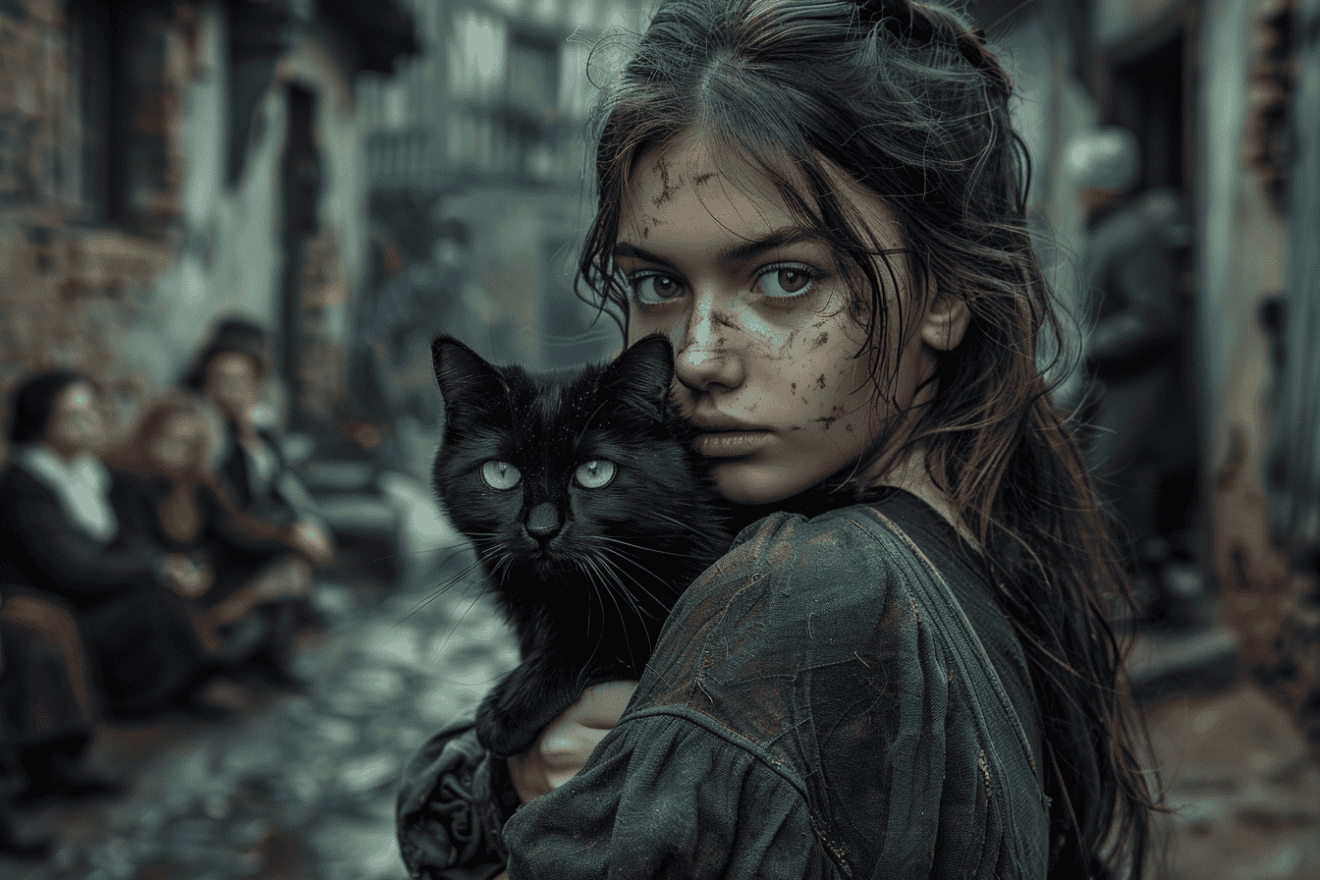In medieval times, the Black Death was a devastating pandemic that wiped out millions of people across Europe.
While the disease was caused by the bacterium Yersinia pestis, many people believed that it was actually a curse brought on by black cats.
This superstition led to the mass killing of cats, which in turn fueled the spread of the disease.

The Black Cat Curse was a widespread belief that black cats were evil and could bring misfortune or even death.
This superstition was particularly prevalent in medieval Europe, where people often associated black cats with witchcraft and the devil.
As a result, many people believed that killing black cats could ward off evil and protect them from harm.
Unfortunately, this belief had disastrous consequences for both humans and cats. By killing off large numbers of cats, people inadvertently increased the rodent population, which was the primary carrier of the disease.
This, in turn, made the Black Death even more deadly and helped to fuel its rapid spread across the continent.
The Origins of Black Cat Superstitions

The black cat has been a symbol of both good and bad luck for centuries.
Ancient Egyptians believed that the goddess Bastet, who was depicted as a woman with the head of a cat, was the protector of the home.
Cats, especially black ones, were considered sacred and were often mummified when they died.
Egyptians believed that cats could bring good luck and fortune to their owners.
From Europe to the Middle Ages
In Europe, the black cat was often associated with witchcraft and evil. During the Middle Ages, people believed that witches could transform into black cats to carry out their wicked deeds. This belief led to the persecution and killing of many black cats.
Normans and Germanic people believed that a black cat was a sign that death would soon occur. They thought that if a black cat crossed your path, it was bad luck.
The fear of black cats also stemmed from medieval times when an animal with dark feathers or fur, including crows and ravens, signaled death. In 16th-century Italy, it was believed that death was imminent if a black cat would lay on someone’s sickbed.
Despite the negative connotations, there were some positive beliefs associated with black cats during the Middle Ages. Appalachian folklore said that if you had a stye on the eyelid, rubbing the tail of a black cat on it would make the stye go away.
The Norse goddess Freyja drove a chariot pulled by a pair of black cats, which were seen as symbols of fertility and good luck.
Black Cats and the Spread of the Black Death

The Black Death, also known as the Bubonic Plague, was a devastating pandemic that swept through Medieval Europe in the 14th century.
It is estimated that the plague killed between 75 and 200 million people, with the number varying depending on the source. The cause of the plague was the bacterium Yersinia pestis, which was spread by fleas that infested rats.
The Role of Rats and Fleas
Rats were the primary carriers of the fleas that spread the plague. The fleas would bite an infected rat and then bite a human, transmitting the bacteria.
The fact that rats were so common in Medieval Europe made it easy for the plague to spread rapidly. Additionally, the unsanitary conditions in many cities and towns made it difficult to control the rat population.
During the Middle Ages, black cats were often associated with witchcraft and Satan. This superstition led to the persecution of both cats and their owners.
Some people believed that cats were the familiars of witches and that they helped spread the plague. As a result, many cats were killed in an attempt to stop the spread of the disease.
However, the killing of cats had the opposite effect. Without their natural predators, the rat population increased, which in turn led to a greater spread of the plague.
The idea that the killing of cats led to the spread of the plague is a misconception. In fact, it was the lack of cats that contributed to the spread of the disease.
The Catholic Church also played a role in the persecution of cats and their owners. Pope Gregory IX was accused of ordering the mass killing of black cats, which allegedly led to a population explosion among plague-infected rodents. However, there is little evidence to support this claim.
Cultural Impact and Historical Consequences

The Black Death, also known as the bubonic plague, was one of the deadliest pandemics in human history. It claimed millions of lives across Europe during the 14th century.
During this time, the superstitions surrounding black cats were at an all-time high. This led to the persecution and killing of black cats, which in turn, worsened the spread of the disease.
The Church played a significant role in the persecution of black cats. They associated black cats with witchcraft and considered them to be the devil’s familiar.
This belief led to the killing of thousands of black cats. Unfortunately, this only contributed to the spread of the disease, as the cats were natural predators of the rats that carried the fleas that spread the disease.
The Renaissance and Changing Attitudes
During the Renaissance, attitudes towards black cats began to change. The Renaissance was a period of enlightenment, and people began to question the superstitions that had been prevalent for centuries.
Historians began to research the origins of these superstitions and found that they were baseless.
As a result, black cats began to gain respect and affection once again. They were no longer associated with witchcraft and were even considered to be good luck charms.
In some cultures, black cats were believed to bring prosperity and were often kept as pets.
Today, black cats are still associated with Halloween and are often used as decorations during the holiday. However, they are also welcomed into shelters and are available for adoption.
The cultural impact of the Black Death and the superstitions surrounding black cats cannot be denied. However, the Renaissance helped to change attitudes towards these animals, and they are now seen as worthy of respect and affection.










Add Comment